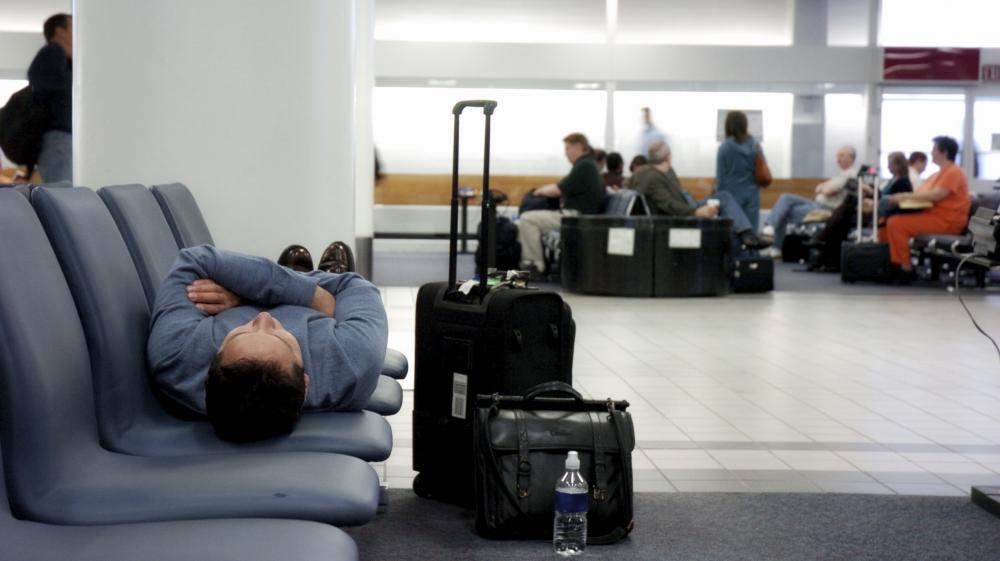Jet lag is nobody’s idea of fun. A bunch of mathematicians say they can make the adjustment less painful with a smartphone app that calculates the swiftest way to adjust.
Users plug in the time zone they’re traveling to, and the app will do the calculations before spitting out a schedule specifying when the user should stay in bright light, low light or be in the dark, says Olivia Walch, a graduate student at the University of Michigan who designed the app.
“The conventional wisdom is for every hour you’re shifting, it’s about a day of adjustment,” Walch says. So Washington, D.C., travelers going to Hong Kong — a 12-hour time difference — could take up to 12 days to adjust. The app can reduce that time to roughly four or five days, the inventors say.
There are other jet lag apps out there, but few actually have science to back them up. The Entrain app is based on the premise that the body’s circadian clock relies heavily on light to know what time of day it is.
“In your brain you have a central circadian clock … [that] sends signals all throughout the body,” says Danny Forger, a professor of mathematics and computational medicine at Michigan and the mastermind behind the app. And that central clock controls all of the body’s biological functions.
The free app, which is named after that process of entrainment, recommends a schedule of light exposure to sync the body to a different time zone in the quickest way possible.
The app also can be customized based on the amount of light a person is actually getting. It then recalculates the schedule for the days ahead.
Unlike with many of the apps out there, Forger and his colleagues have more than 80 pages of complex science and calculus in a study, published Thursday in PLoS Computational Biology, to support their product.
Using two mathematical equations that predict how light affects the human circadian clock, Forger and his colleagues simulated the optimal schedules for more than 1,000 possible trips. They then applied two basic principles. One is to be exposed to one big block of light and one big block of dark in your day, Walch says. Another is to be exposed to the brightest possible light.
The equations themselves aren’t new; they have been used by NASA, the transportation industry and the military, according to Forger. But he says he’s finally putting that technology in the palm of the average person’s hand.
Think about flying from the East Coast of the U.S. to Japan, says Dr. Elizabeth Klerman, a sleep medicine and disorder researcher at Harvard Medical School. You can fly through each time zone one by one and have your circadian clock slowly adjust, or you can do what airplanes do.
“They basically fly up to the North Pole and skip across multiple time zones and then go back down again rather than having to cross each intermediate time zone,” Klerman, who wasn’t involved in the study, says. “Well, the equations that Forger used are able help you skip across time zones.”
The Entrain app hasn’t yet been flight tested, but Klerman thinks it should work.
“Theoretically, there would be ways to speed up re-entrainment, but you need to do experiments to make sure whether it works, because humans don’t always respond the way mathematical models expect them to,” she tells Shots. “But he has based his model on decades of thorough experiment, and a model that has been tested very thoroughly.
“So I would like to think that he’s right,” she says.
9(MDA3MTA1NDEyMDEyOTkyNTU3NzQ2ZGYwZg004))
